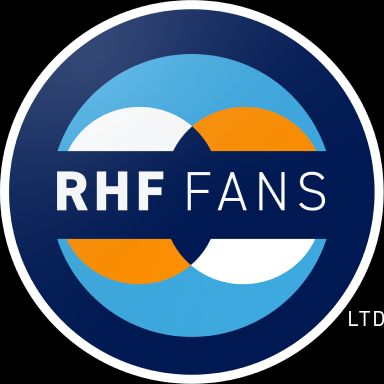
How Do Axial Fans Work?
Published on 27 Mar 2025
What Are Axial Fans?
Axial fans play a pivotal role in industrial ventilation by efficiently moving air and gases, essential for maintaining optimal conditions in cooling systems, air filtration, and ventilation. Unlike centrifugal fans that use rotating impellers to expel airflow at an angle, axial fans propel air horizontally. This blog will unravel the workings of axial fans, explore their core elements, and discuss the diverse range of models tailored for differing industrial needs.
Axial fans are powerful air-moving devices designed to deliver airflow directly and in parallel to their axis. They feature a wheel-like design that directs airflow along the length of the drive shaft. It operates using axial force, allowing it to move large volumes of air while maintaining a compact structure. The fan’s impeller has specially designed forward-curved blades that enhance airflow and transport air.

Airflow in Axial Fans
Rotational energy is transformed into a strong, directed airflow by axial fans. They have several propellers powered by a motor that produces rotational motion. There is a low-pressure area behind the fan and a high-pressure area in front due to the propellers' high-speed rotation. To create a characteristic axial flow pattern that guarantees excellent ventilation and air circulation, the air is consequently sucked in from behind and forced forward via the blades. This streamlined mechanism provides airflow in a straight line or horizontal path.
Structural Elements
Axial fans support industrial processes and ventilation systems because they move high volumes of air in low-pressure environments. Each mechanical feature helps the fan operate reliably for its intended application.
- Impeller
- The impeller, often known as the fan blades, is the central component of an axial fan. They usually have an aerodynamic profile to maximise airflow and can have varying numbers of blades.
- Motor
- The motor drives the axial fan by supplying the required mechanical energy to rotate the impeller. Depending on the application, axial fans can be powered by electric motors or other sources.
- Drive Shaft
- The drive shaft is the mechanical part that joins the impeller to the fan's motor. When the motor rotates the shaft, it produces airflow, which rotates the impeller.
- Housing
- The fan's housing is the structural support for internal components, which helps direct airflow and minimises turbulence and energy loss.
- Bearings
- The bearings make the fan run smoothly by reducing friction between moving parts and reducing noise when the fan is in operation.
- Mounting Structure
- This frame provides structural support for the entire centrifugal fan assembly by securing the fan housing and internal components and ensuring proper alignment.
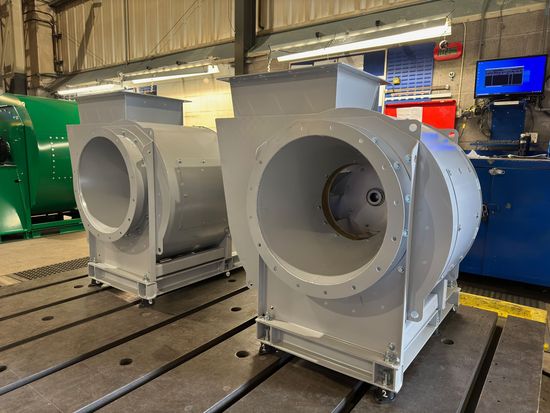
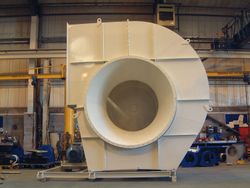

Types of Axial Fans
As diverse as industries are, axial fans likewise come in a wide range of forms to maintain ideal conditions in specific settings because they are employed to support a wide range of industrial situations.
Special Design Axial Fans
RHF Fans provide specialised and powerful airflow solutions that are suited to the needs of your business, thanks to their extensive selection of axial fan designs, sizes, and casing variations.
Cased
Long-cased axial fans have casings that extend to cover the motor completely, while short-case axial fans do not. These cased fan arrangements have the impeller directly mounted onto the motor shaft, and the motor sits on an adjustable platform. The casing is flanged at both ends with flanges that are produced by spin forming from one piece of metal.
These casings are usually employed at the end of ducting runs with the impeller contained inside; however, the end of the motor and supports protrude past the end of the casing.
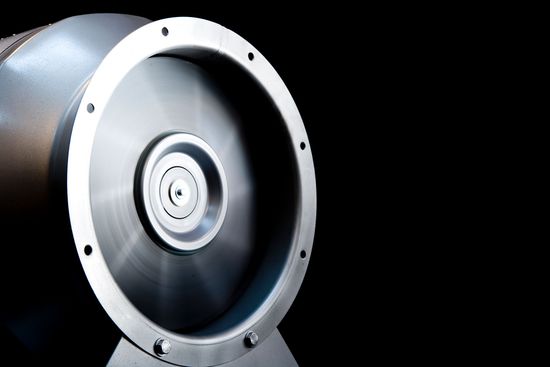
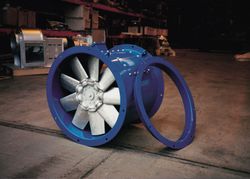

Belt Driven
Lagged
Belt-driven axial fans are ideal for environments where the air may contain dust or moisture, operate at high temperatures, or require adjustable fan speeds. The impeller is directly keyed onto the bearing unit shaft and driven by vee belts enclosed within a tunnel, which isolates them from the air stream. External lubrication points are easily accessible for maintenance.
Bifurcated
These fans are direct-drive axial fans specially designed for dusty or moisture-filled environments. They have been specially engineered for hostile air movement by keeping the air stream from having contact with the motor, protecting it from dust-laden, corrosive, or hot air.
RHF Fans supply two types of bifurcated fans, the HD bifurcated fan and the LD bifurcated fan, and they have the option of swollen casings to allow larger frame sizes to be fitted.

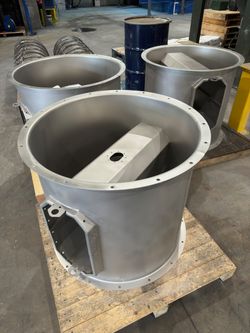
Axial Fan Designs You Can Trust
Coupling Drive
Axial fans are the top choice for high-volume, low-pressure needs in industrial uses, as their design is remarkably efficient in ventilating expansive areas. Deciding which axial fan is the right one for your business hinges on factors like airflow capacity and energy consumption to guarantee peak efficiency. Contact our experts at RHF Fans to discover exceptional fan solutions customised for your needs. We'll assess your system and facility to pinpoint the perfect industrial fan for your application.
